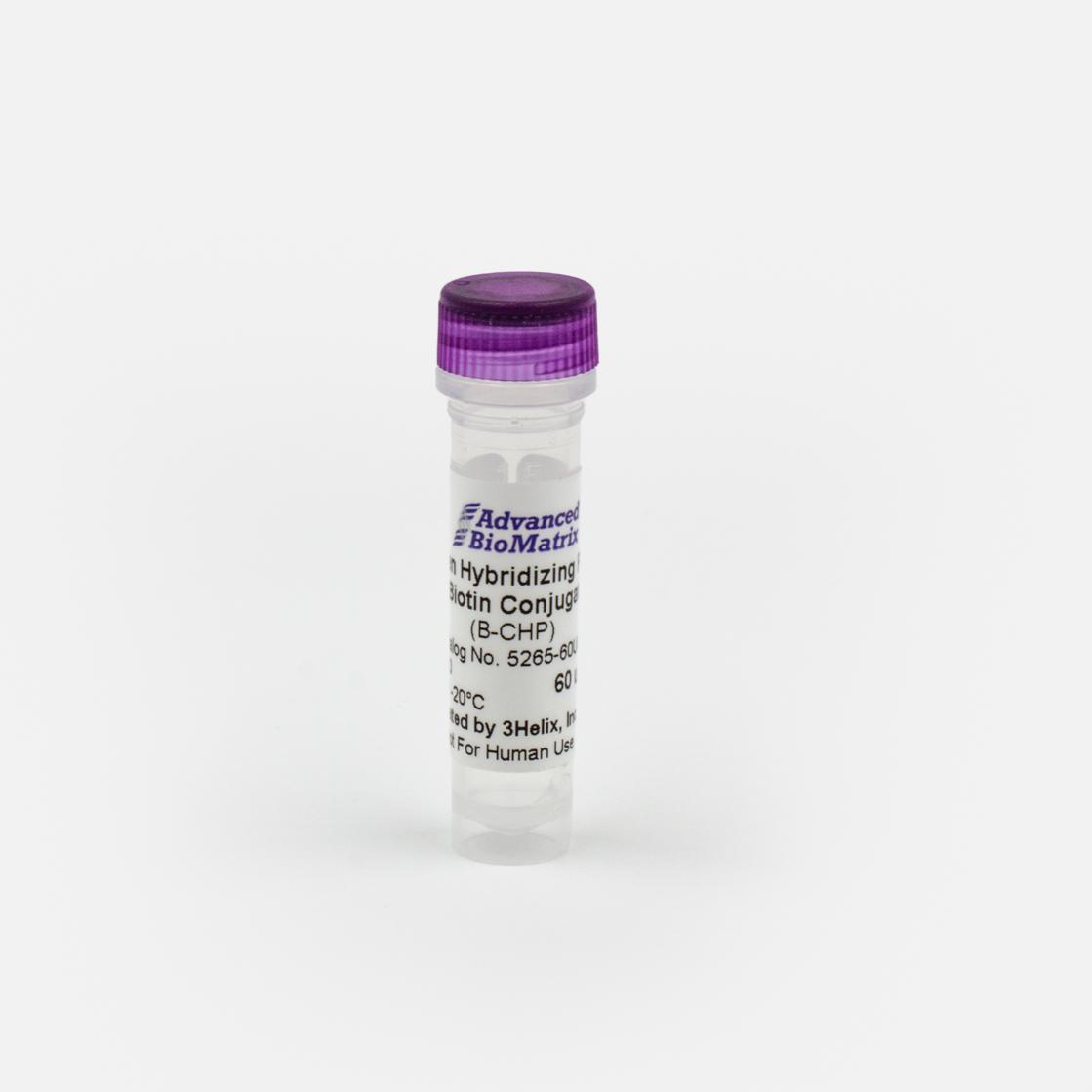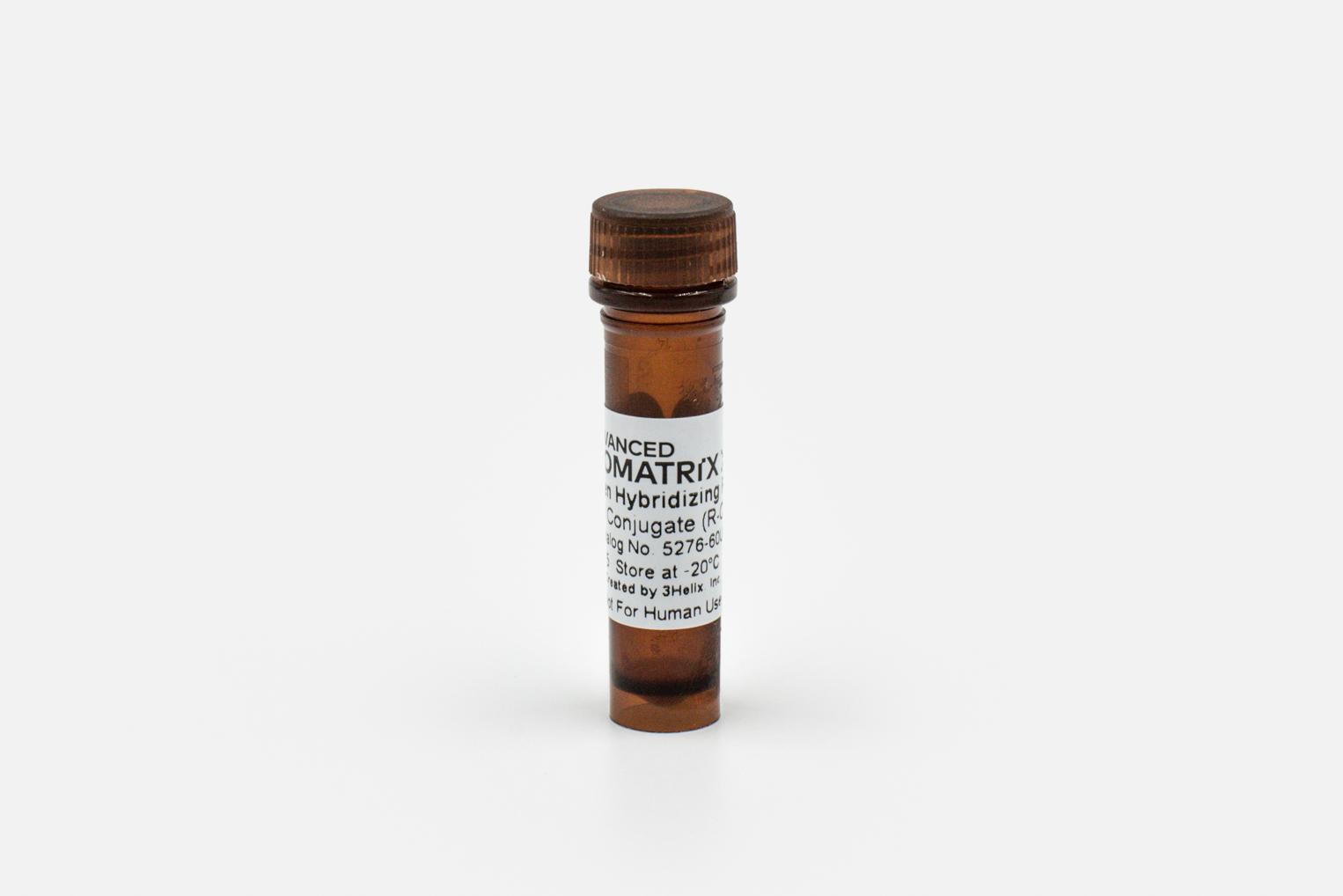-
Collagen
-
Type I - Atelocollagen
- PureCol® Solution, 3 mg/ml (bovine) #5005
- Nutragen® Solution, 6 mg/ml (bovine) #5010
- FibriCol® Solution, 10 mg/ml (bovine) #5133
- PureCol® EZ Gel, Solution, 5 mg/ml (bovine) #5074
- PureCol® Lyophilized, 15 mg (bovine) #5006
- VitroCol® Solution, 3 mg/ml (human) #5007
- VitroCol® Lyophilized, 15 mg (human) #5008
-
Type I - Telocollagen
- TeloCol®-3 Solution, 3 mg/ml (bovine) #5026
- TeloCol®-6 Solution, 6 mg/ml (bovine) #5225
- TeloCol®-10 Solution, 10 mg/ml (bovine) #5226
- RatCol™ for 2D and 3D, Solution, 4 mg/ml (rat) #5153
- RatCol™ High Concentration, Solution, 10 mg/ml (rat)
- RatCol™ lyophilized, 100 mg (rat)
- RatCol™ for Coatings, Solution, 4 mg/ml (rat) #5056
- Type I - Insoluble Collagen
- Type I - Bioinks
- Type II Collagen
- Type III Collagen
- Type IV Collagen
- Collagen Standard
-
PureCol® Collagen Coated Plates
- Collagen Coated T-25 Flasks #5029
- Collagen Coated 6-well Plates #5073
- Collagen Coated 12-well Plates #5439
- Collagen Coated 24-well Plates #5440
- Collagen Coated 48-well Plates #5181
- Collagen Coated 96-well Plates #5072
- Collagen Coated 384-well Plates #5380-5EA
- Collagen Coated 100 x 20 mm Dishes #5028
- MatTek Glass-Bottom Dishes
- MatTek Multi-Well Plates
- Collagen Scaffolds
- Collagen Hybridizing Peptides
-
Type I - Atelocollagen
- Tunable Stiffness
- CytoSoft™ Rigidity Plates
-
Bioprinting
- Support Slurry for FRESH Bioprinting
-
Bioinks for Extrusion Bioprinting
- Lifeink® 200 Collagen Bioink (35 mg/ml) #5278
- Lifeink® 220 Collagen Bioink (70 mg/ml) #5343
- Lifeink® 240 Acidic Collagen Bioink (35 mg/ml) #5267
- Lifeink® 260 Acidic Collagen Bioink (70 mg/ml) #5358
- GelMA Bioink
- GelMA A Bioink
- GelMA C Bioink
- Pluronic F-127 40% Sterile Solution
- GelMA 20% Sterile Solution
- Alginate 5% Sterile Solution
- Photoinitiators
- Bioinks for BIONOVA X
- Bioinks for Lumen X
- DLP Printing Consumables
-
Create Your Own Bioinks
- PhotoCol® Methacrylated Collagen
- PhotoGel® Methacrylated Gelatin 95% DS
- PhotoGel® Methacrylated Gelatin 50% DS
- PhotoHA®-Stiff Methacrylated Hyaluronic Acid
- PhotoHA®-Soft Methacrylated Hyaluronic Acid
- PhotoAlginate® Methacrylated Alginate
- PhotoDextran® Methacrylated Dextran
- PEGDA (Various Molecular Weights)
- Silk Fibroin, Solution
- PhotoSericin® Methacrylated Sericin
- Bioprinters
-
3D Hydrogels
- Thermoreversible Hydrogel
- Silk Fibroin
-
Type I Collagen for 3D Hydrogels
- PureCol® Solution, 3 mg/ml (bovine) #5005
- Nutragen® Solution, 6 mg/ml (bovine) #5010
- FibriCol® Solution, 10 mg/ml (bovine) #5133
- PureCol® EZ Gel, Solution, 5 mg/ml (bovine) #5074
- VitroCol® Solution, 3 mg/ml (human) #5007
- TeloCol®-3 Solution, 3 mg/ml (bovine) #5026
- TeloCol®-6 Solution, 6 mg/ml (bovine) #5225
- TeloCol®-10 Solution, 10 mg/ml (bovine) #5226
- RatCol® for 3D gels, Solution, 4 mg/ml (rat) #5153
- HyStem® Thiolated Hyaluronic Acid
- Methacrylated Collagen
- Methacrylated Gelatin
- Methacrylated Hyaluronic Acid
- Diacrylates
- Collagen Sponges
- Methacrylated Polysaccharides
- Spheroids and Organoids
- Extracellular Matrices
- HyStem / Hyaluronic Acid
-
Adhesion Peptides / Proteins
-
Recombinant Adhesion Proteins
- CD2, 0.5 mg/ml #5086
- CDH3, 0.5 mg/ml #5124
- CDH13, 0.5 mg/ml #5125
- CD14, 0.5 mg/ml #5089
- CDH18, 0.5 mg/ml #5090
- CD40, 0.5 mg/ml #5093
- CD86, 0.5 mg/ml #5096
- CD164, 0.5 mg/ml #5100
- CD270, 0.5 mg/ml #5127
- CD274, 0.5 mg/ml #5126
- CD276, 0.5 mg/ml #5123
- E-Cadherin (CD324), 0.5 mg/ml #5085
- ICAM2, 0.5 mg/ml #5107
- Adhesion Peptides
- Collagen Hybridizing Peptides
-
Recombinant Adhesion Proteins
- Reagents
- Assays
Biotin Conjugate
Collagen Hybridizing Peptide (Biotin)
Catalog #5265
Biotin Conjugate
Collagen Hybridizing Peptide (Biotin)
Catalog #5265
The Biotin Collagen Hybridizing Peptide (CHP) is a synthetic peptide that can specifically bind to denatured collagen strands through hydrogen bonding, both in histology, in vivo, and in vitro (3D cell culture). CHP's serve as a unique tool for identifying denatured collagen.
Product Description
Collagen Hybridizing Peptides (CHP) conjugates from Advanced BioMatrix are labeled with 5-FAM (F-CHP, Catalog No. 5264-60UG) / sulfo-Cyanine3 (R-CHP, Catalog No. 5276-60UG) for fluorescence detection, or biotin (B-CHP, Catalog No. 5265-60UG) for avidin/streptavidin-mediated detection.
The triple helix is the hallmark protein structure of collagen. During tissue remodeling, the triple helical collagen molecules are degraded by specific proteases (e.g., MMP or cathepsin K) and become unfolded at body temperature. The Collagen Hybridizing Peptide (CHP) is a synthetic peptide that can specifically bind to such denatured collagen strands through hydrogen bonding, both in histology, in vivo, and in vitro (3D cell culture). By sharing the structural motif and the Gly-X-Y repeating sequence of natural collagen, CHP has a strong capability to hybridize with denatured collagen strands, in a fashion that is similar to a DNA fragment annealing to its complimentary DNA strand during PCR. CHP is an extremely specific probe for unfolded collagen molecules: it has negligible affinity to intact collagen molecules due to the lack of binding sites; it is also inert towards non-specific binding because of its neutral and hydrophilic nature.
| Parameter, Testing, and Method | CHP Biotin #5265 |
| Specialty | Flexible avidin / streptavidin mediated detection options based on needs, allowing non-green fluorescence and HRP methods to avoid background and enhance signal |
| Formula | C124H181N31O39S |
| Molecular Weight | 2762.01 g/mol |
| Ex/Em | N/A |
| Synonym | Collagen Mimetic Peptide, CMP |
| Solubility | Aqueous Buffers |
| Storage | -20°C as powder for long term storage. 4°C after reconstitution in water. Protect from light. |
| Source | Synthetic |
| Shelf Life | Minimum of 6 months from date of receipt |
Storage/Stability:
The product ships on ambient. Store the product at -20°C.
Features of CHP reagents
- More informative, reliable and convenient than zymography, DQ collagen, SHG, and TEM
- High affinity and unparalleled specificity to collagen with essentially no nonspecific binding
- Applicable to denatured collagens of all subtypes and from all species; binding relying on collagen’s secondary structure instead of specific epitopes
- Suitable for both frozen and paraffin-embedded sections with no need for antigen retrieval
- A non-antibody approach with no species restrictions, compatible for co-staining with any antibody
- Small size (2% of IgG by MW) enabling facile tissue penetration during whole tissue staining (with no need for sectioning)
- Stable in solution under 4 °C, eliminating the need to aliquot for storage
Product Q & A
The CHP is fairly stable. Therefore, it is possible to reuse a dilute solution that has been heated already, although the intensity of the stain may decrease and results may not be as optimal. To reuse the dilute solution, it needs to be heated to 80C and cooled down again immediately prior to reuse.
The CHP doesn't bin based on a specific epitope, but rather the structural recognition of the individual alpha chains that make up the triple-helix. Because of this, they can bind anywhere along the collagen chain, bind all types of collagen regardless of species or tissue type. You can use the suggested mAb and the CHPs together.
One thing to note is that usually, mAbs require heat-mediated antigen retrieval, which causes severe damage to the collagen resulting in denaturing all the collagen in the sample. Therefore, the CHP will give the total collagen content in the slide as opposed to identifying any damage caused by a disease or trauma. We recommend either using serial sections where one section is heated for mAb staining and the other left unheated for CHP staining. If you want both on a single slide, we recommend doing an enzymatic epitope retrieval method if possible.
Finally, it is important to understand that the mAb they wish to use will give them intact collagen content while CHP gives denatured collagen content, therefore the regions will be inverse.
CHPs form hydrogen bonds with gelatin/Gelma because they have the Gly-X-Y structural motif just like the underlying structure of Gelma. Assuming that you are fixing Gelma with photocrosslinking, most of the methacrylation of gelatin to make Gelma is on the lysine groups, leaving plenty of Gly-X-Y sites for CHP binding.
Product References
References for Collagen Hybridizing Peptides:
1. Targeting and mimicking collagens via triple helical peptide assemblies. Current Opinion in Chemical Biology, 2013, 17, 968–975.
2. In situ imaging of tissue remodeling with collagen hybridizing peptides. ACS Nano, 2017, 11, 9825–9835.
3. Targeting collagen strands by photo-triggered triple-helix hybridization. Proceedings of the National Academy of Sciences of the United States of America, 2012, 109, 14767–14772.
4. Visualizing collagen proteolysis by peptide hybridization: From 3D cell culture to in vivo imaging. Biomaterials, 2018, 183, 67–76.
5. Direct detection of collagenous proteins by fluorescently labeled collagen mimetic peptides. Bioconjugate Chemistry, 2013, 24, 9–16.
6. Molecular level detection and localization of mechanical damage in collagen enabled by collagen hybridizing peptides. Nature Communications, 2017, 8, 14913, doi: 10.1038/ncomms14913.
7. Molecular assessment of collagen denaturation in decellularized tissues using a collagen hybridizing peptide. Acta Biomaterialia, 2017, 53, 268–278.
Product Certificate of Analysis
No result for .
Product Disclaimer
This product is for R&D use only and is not intended for human or other uses. Please consult the Material Safety Data Sheet for information regarding hazards and safe handling practices.







